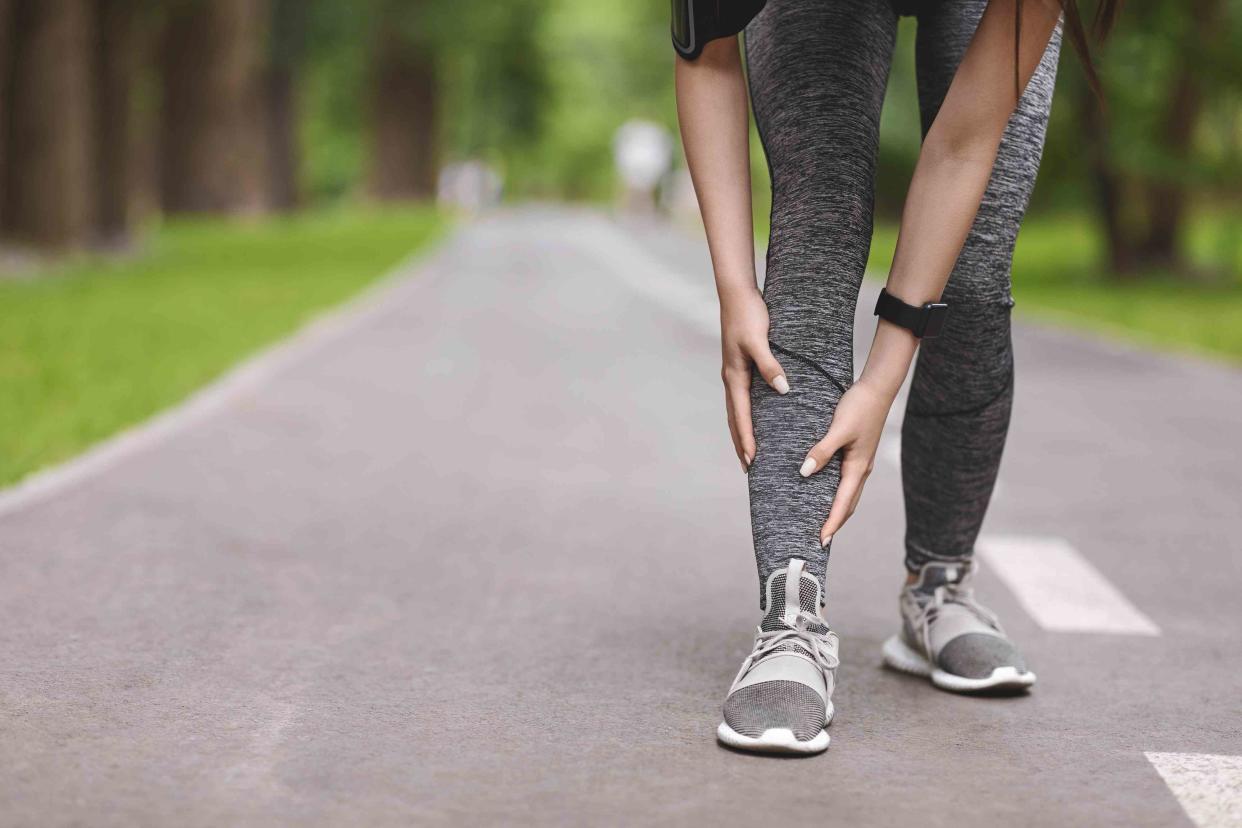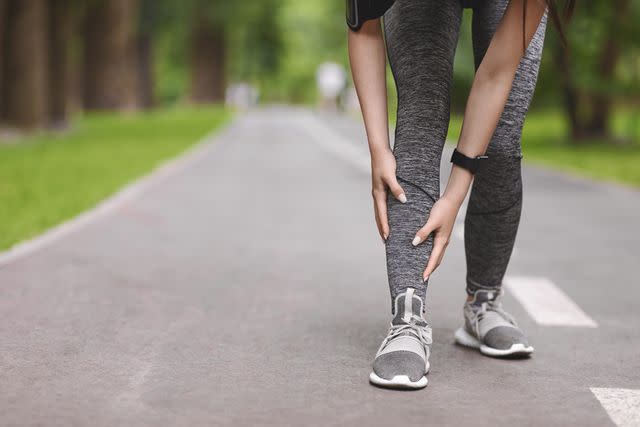How Shin Splints Are Treated

Prostock-Studio / Getty Images
Medically reviewed by Laura Campedelli, PT, DPT
Treatments for shin splints include home remedies, activity modification, medications, and physical therapy. In rare cases, a healthcare provider may recommend procedures such as prolotherapy (an injectable treatment) and extracorporeal shock wave therapy (ESWT) (a noninvasive treatment) for shin splints.
This article discusses common treatments for shin splints, as well as underlying issues that can be treated to help reduce the risk of the problem becoming chronic.

Prostock-Studio / Getty Images
Related: How Long Will My Shin Splints Last?
Home Remedies and Activity Modifications
Shin splints are an overuse injury that typically affects physically active people and are the most common injury experienced by runners. Athletes and people in the military also experience shin splints at higher rates than nonathletes and civilians.
Home Remedies
Home remedies that help decrease the pain and inflammation of shin splints include:
Ice: Apply ice to your shin splints for 20 minutes several times a day. Use a commercial ice pack or fill a plastic quart-sized bag with ice cubes. Place a barrier, like a washcloth, between your skin and the ice pack to help prevent ice burn (frostbite).
Add some support: Shoe inserts (foot orthotics) provide additional support for your arches, which can help reduce strain on inflamed muscles. You can purchase orthotics over the counter or have them custom molded for an individualized fit.
Stretch your muscles: Specific stretches help decrease tightness in muscles that contribute to shin splints—such as the tibialis anterior on the front of the shin and the gastrocnemius and soleus muscles in the calf.
Wear compression socks or sleeves: Compression socks or sleeves help reduce or prevent swelling from shin splints and increase blood flow to your muscles. Use compression clothing when gravity can contribute to swelling in your lower legs, such as when walking or standing for extended periods. Take them off at night, and elevate your legs while you sleep.
Try kinesiology tape: Applying kinesio tape for shin splints can help relieve pressure on your shins and increase blood flow to muscles affected by this condition.
Activity Modifications
Activity modifications are an essential part of the treatment for shin splints. This usually means you'll need to take a temporary break from the exercise causing your symptoms—or at least change your routine.
If you're a runner, this could mean decreasing your mileage, running on a softer surface, or alternating running with walking. You can substitute it with an alternative lower-impact exercise like cycling or swimming.
When to See a Healthcare Provider
See a healthcare provider if your shin splints don't improve with home remedies and activity modifications. Shin splint symptoms can resemble more serious conditions, such as tibial stress fractures (small cracks in shin bones) or exertional compartment syndrome (muscle pain in an overused area).
These conditions can require more significant treatment. In severe cases, a healthcare provider may perform a fasciotomy, opening up the fascia to relieve leg pressure. Without surgery, permanent muscle damage can occur.
Medications
Over-the-counter pain relievers like Tylenol (acetaminophen) help you manage pain, while nonsteroidal anti-inflammatory drugs (NSAIDs) can decrease inflammation and pain caused by shin splints.
Examples of NSAIDs include:
Aleve, Naprosyn (naproxen)
Motrin, Advil (ibuprofen)
Bayer (aspirin)
In some cases, prescription medications might be needed.
Examples include:
Celebrex (celecoxib)
Mobic (meloxicam)
Relafen (nabumetone)
Daypro (oxaprozin)
Physical Therapy
A healthcare provider may suggest physical therapy to treat shin splints. Physical therapists use a variety of treatments to decrease pain and other symptoms caused by this condition.
These modalities can include:
Cold therapy
Ultrasound
Electrical stimulation
Massage
Exercise
Proprioceptive training (helps you perceive the location, movement, and action of the body part)
Assistive-device training (such as for crutches)
Some physical therapists are trained to perform dry needling (inserting thin needles into a muscle), which can decrease pain and tightness in the muscles affected by shin splints.
In addition to treating your symptoms, a physical therapist can also help you figure out the underlying cause of your shin splints and address issues such as:
Poor biomechanics (bodily movements)
Improper footwear
Tightness or weakness in other muscles (such as in the knees or hips)
Overtraining
Foot structure (such as flatfeet)
Other Medical Interventions
Prolotherapy—injection of a sugar called dextrose—is an intervention that can potentially help decrease symptoms of shin splints. However, more research is needed to confirm its effectiveness.
Shin splints can also be treated with extracorporeal shock wave therapy. This procedure delivers low-energy shock waves through a probe on the skin to increase blood flow to the injured tissues.
Summary
Shin splints cause pain and inflammation in the lower leg. These symptoms can be treated with home remedies, activity modifications, medications, and physical therapy. Other medical interventions, such as prolotherapy and extracorporeal shock wave therapy, might also be beneficial.
Shin splints can develop due to other problems, such as poor biomechanics, flat feet, muscle weakness or tightness, overtraining, and improper footwear. A healthcare provider, such as a physical therapist, can help determine the underlying cause of your shin splints and treat these issues to help prevent chronic problems.

